Track-POD Hits the Road with Android Auto & Apple CarPlay Support
Deliver safer, smarter, and faster with Track-POD’s hands-free in-vehicle app integration. Your drivers stay focused on the road while your operations run at full throttle.
Read More
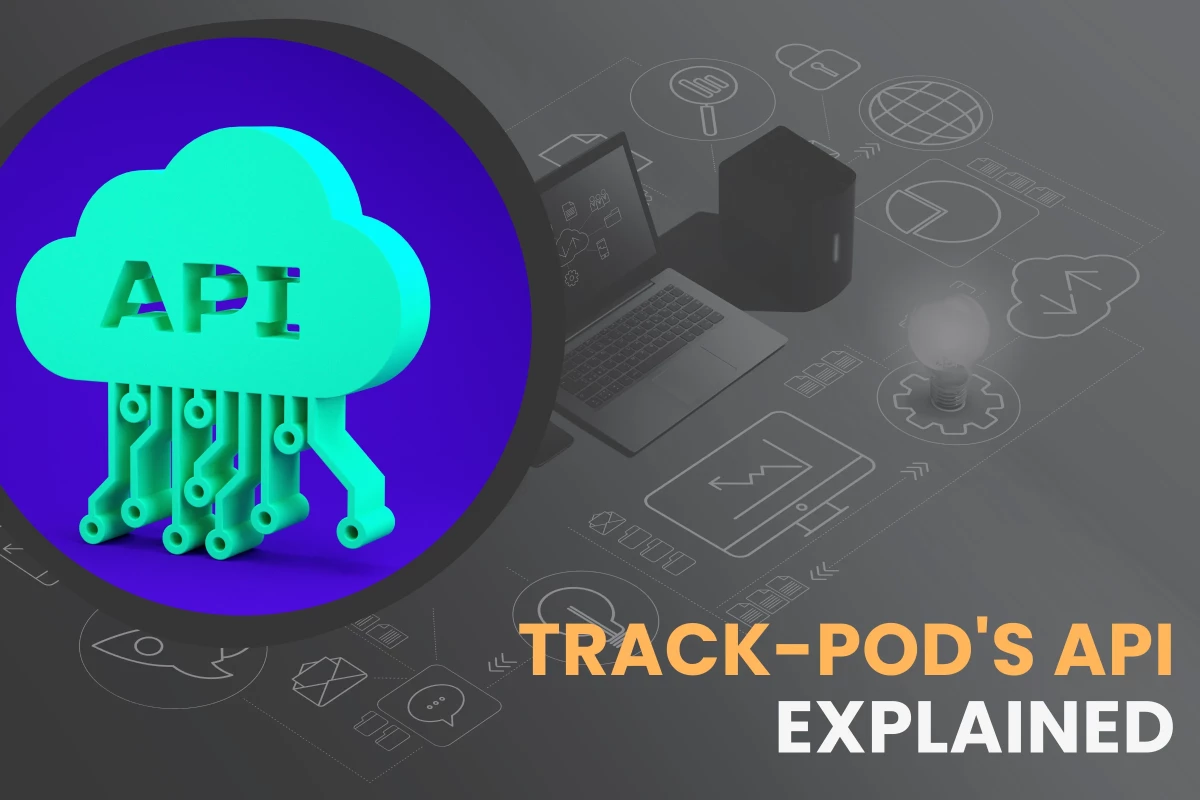
Connect Track-POD to your entire ecosystem with our powerful API, offering more than just data transfer—think advanced permissions, real-time triggers, and rock-solid security.
Unlock seamless workflows for everything from order updates to route optimization with a simple HTTP interface. Dive in to discover how our API puts you in control of your logistics integrations.
On this page:
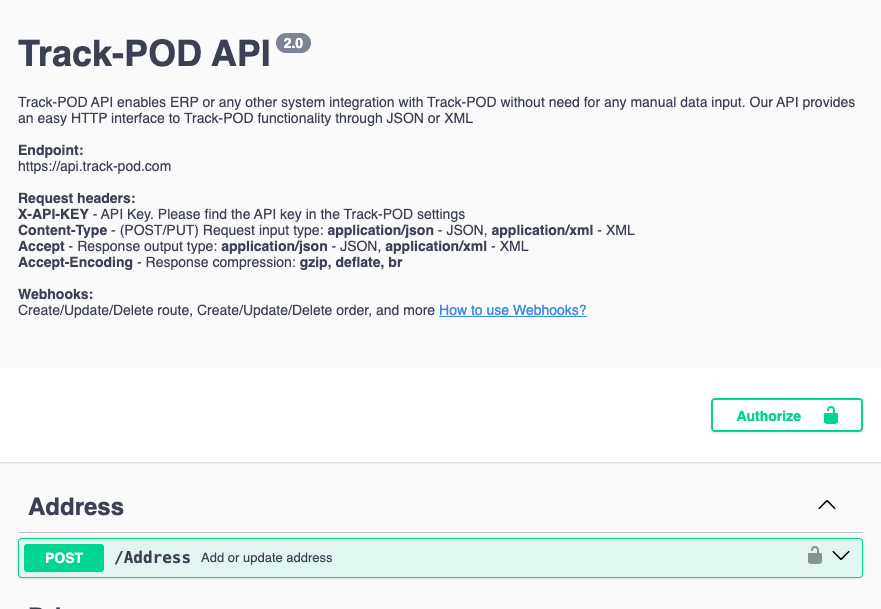
Track-POD's open API, accessible at api.track-pod.com/index.html, offers a free HTTP interface (JSON/XML) for key delivery management features.
! Imagine an e-commerce store where orders automatically sync to Track-POD, ready for routing—that's the power of our API. It automates tasks like adding orders, updating addresses, and creating routes.
The API supports GET, POST, PUT, and DELETE requests and categorizes data: Address, Route, Order, Driver, Test, and Vehicle.
For enhanced security, use API key Restrictions to whitelist specific IP addresses, blocking all others. This is vital for sharing API access with partners while keeping data secure.
In order to use Track-POD’s API, you must generate and use your own unique API key.
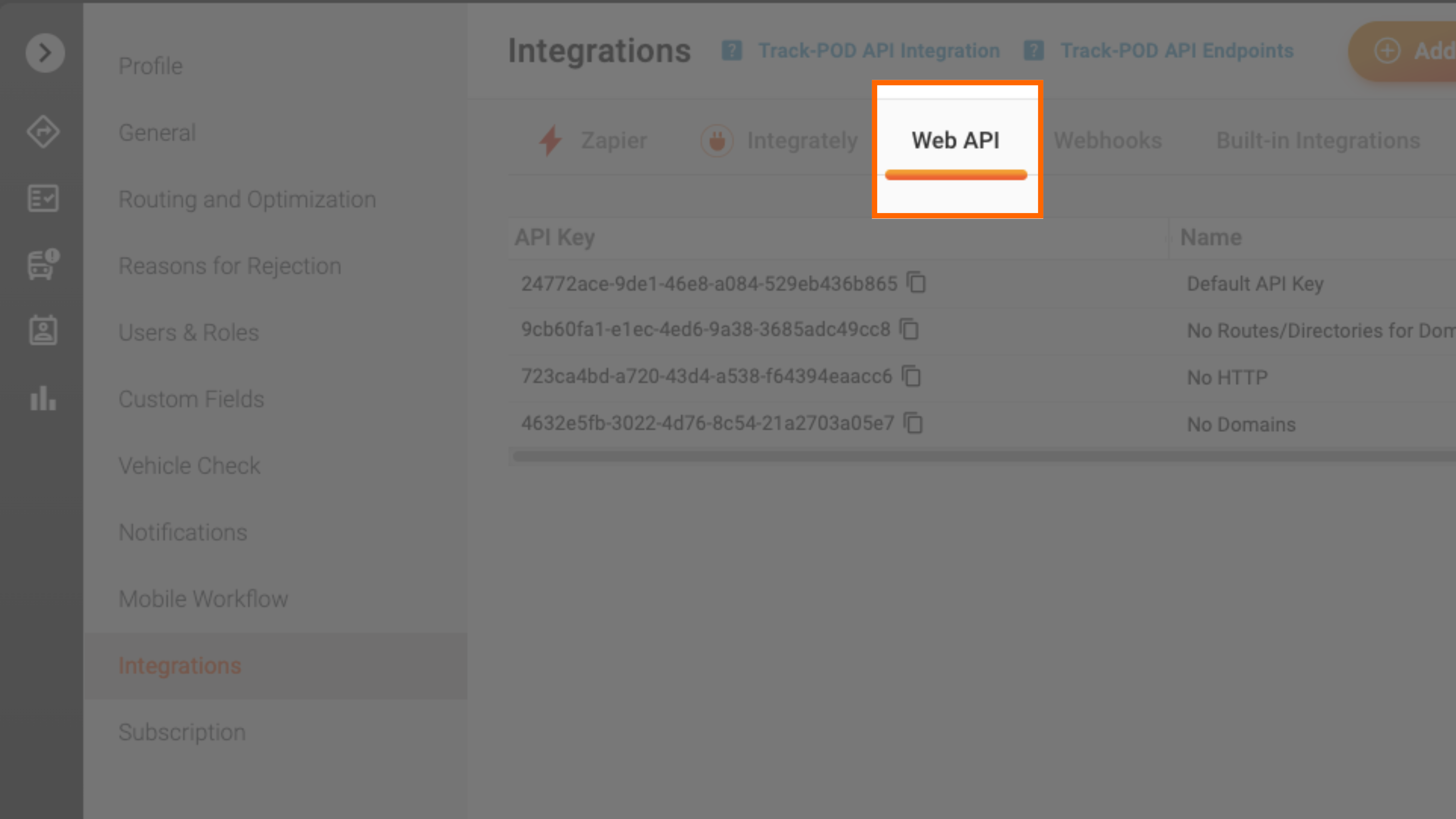
Click the All IPs allowed toggle to clear the Allowed IP list and whitelist every IP. This option might be used temporarily during initial testing or setup, but for production environments, it's highly recommended to use the Allowed IP List for security reasons.
Once your API Key is created and configured, pick it from the list of keys you have in your system, add to your software and receive the information in any environment:
Note: Track-POD's API imposes user-friendly rate limits of 20 requests per second or 400 requests per minute, allowing for sufficient API usage without overwhelming restrictions.
In addition to the standard data provided by our API, the Driver schema now includes a Note field. When you add or edit driver information in Directories > Drivers:
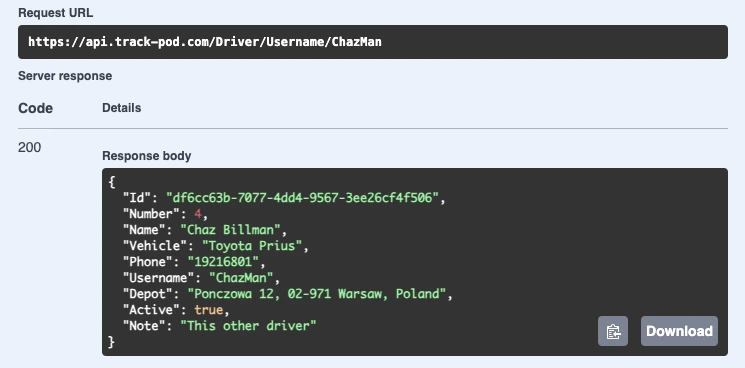
Any note entered there will appear in the API response for Driver endpoints.
The full list of information fields sent:
This enhancement allows for richer integration possibilities, enabling your systems to capture additional context about drivers directly from your Track-POD instance.
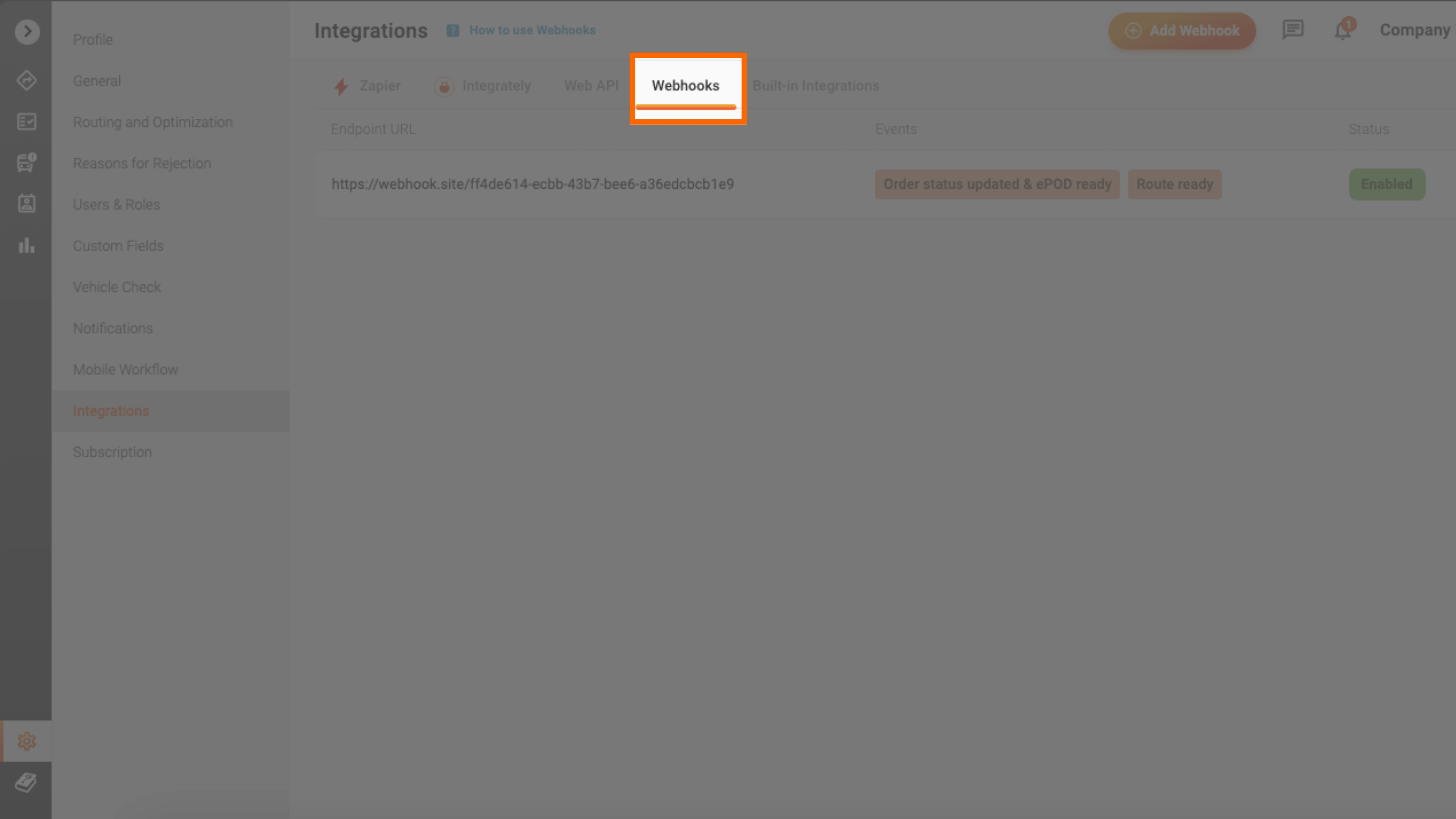
Webhooks are messages sent by Track-POD to your app, containing data about specific events like order creation or route updates. To learn more about using Webhooks, read this document.
Webhooks activate when a certain event happens. You must configure the event triggers in the system:
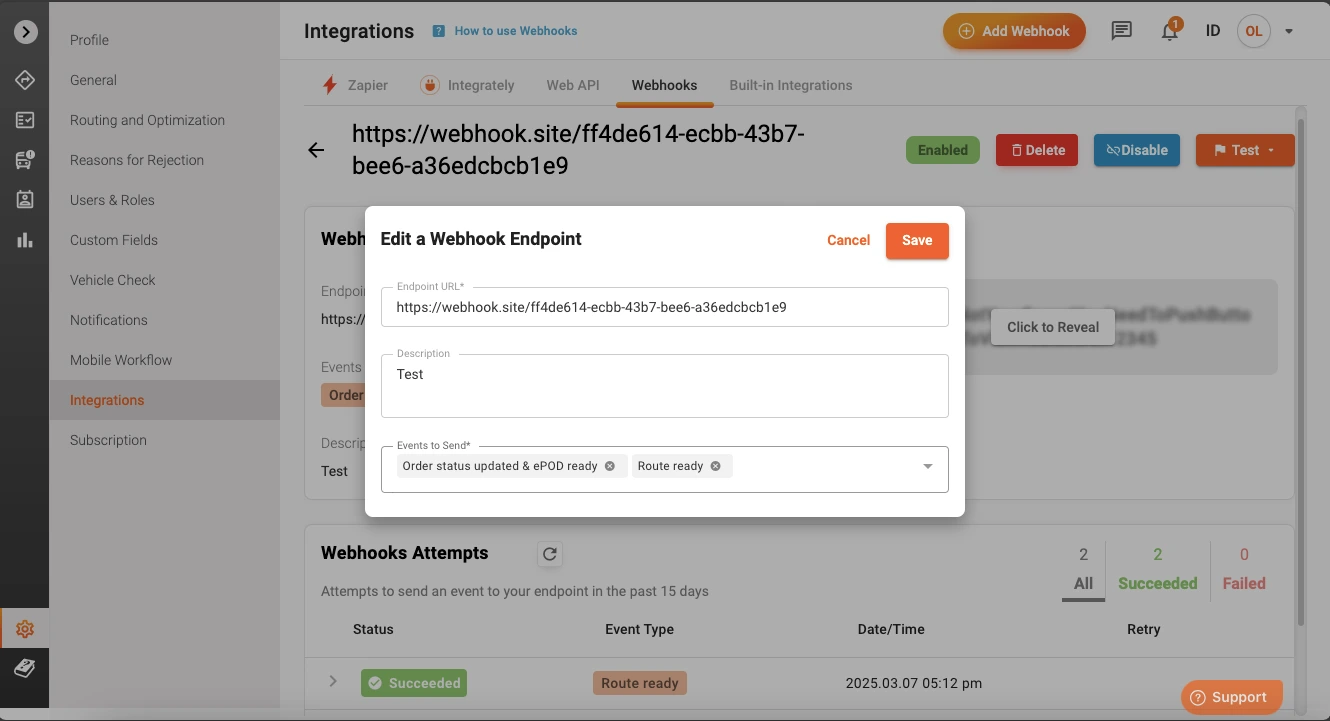
The following events are available:
Customize your notification system by adding as many triggers as needed to suit your operational workflows.
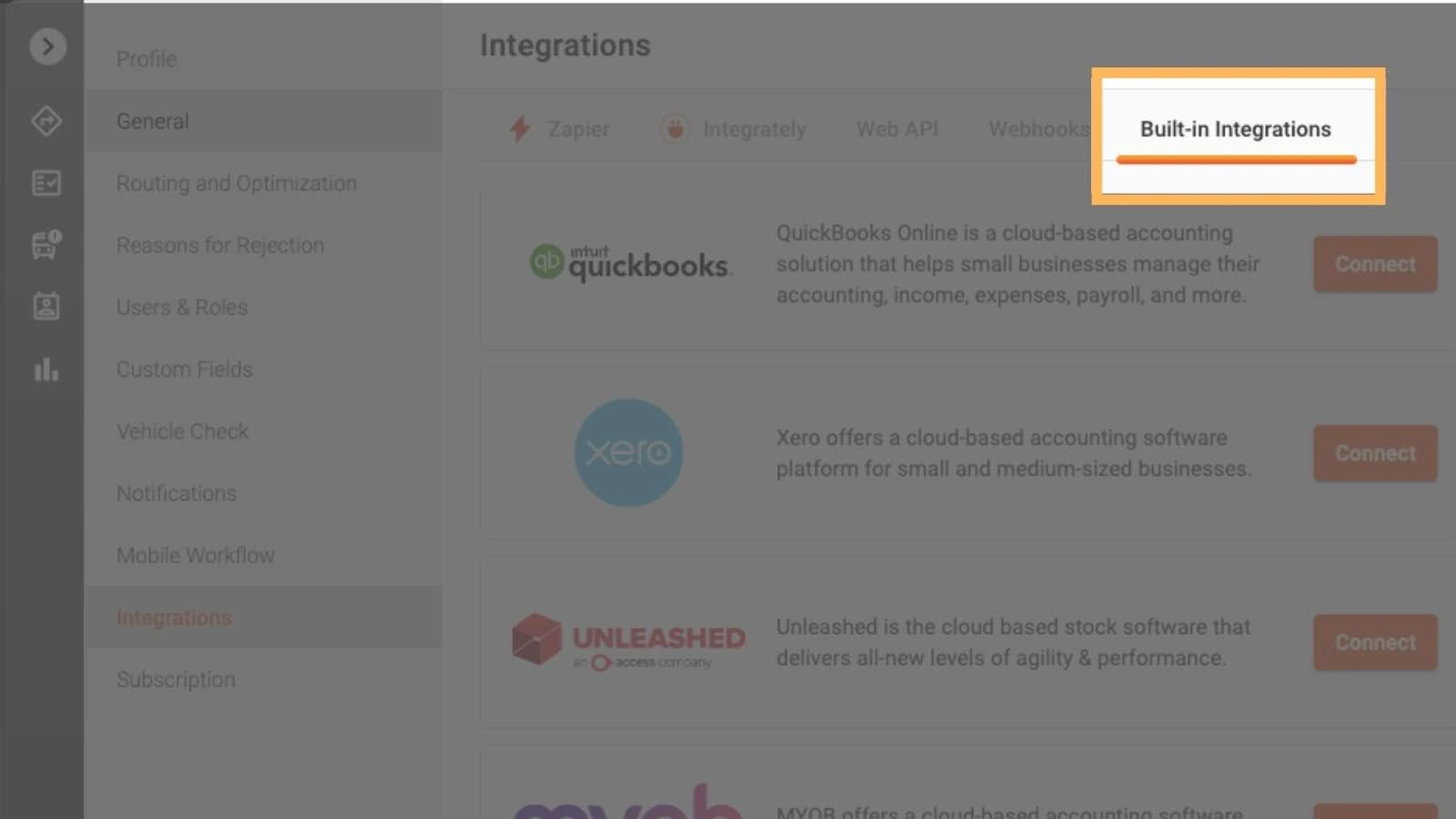
Track-POD comes with built-in and easy to set up shipping integrations that easily connect with various software systems to enhance delivery management operations:
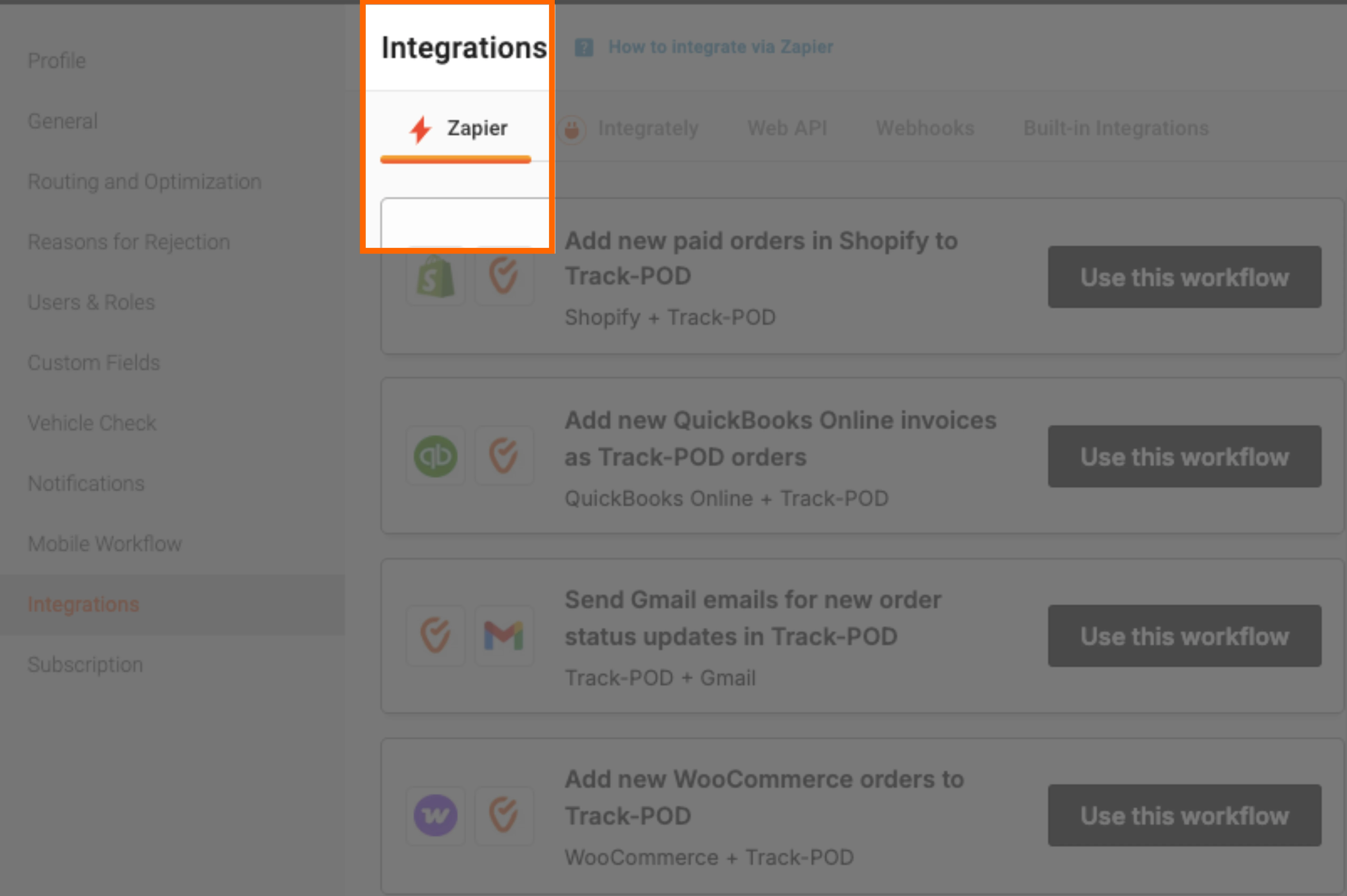
The integration between Zapier and Track-POD offers users a powerful solution to automate tasks and streamline workflows.
With Zapier acting as a bridge between Track-POD and more than 5000 other apps like Shopify and Sage Accounting, users can automate processes such as order processing and invoice management.
By eliminating manual data entry and promoting seamless data flow between Track-POD and these apps, businesses can save time and resources while ensuring smoother operations.
For example, the API integration with Shopify allows for automatic import of new orders into the Track-POD dashboard, facilitating efficient route planning and order delivery. Similarly, the integration with Sage Accounting enables businesses to update orders and invoices based on changes in status, which improves financial management and operational coordination.
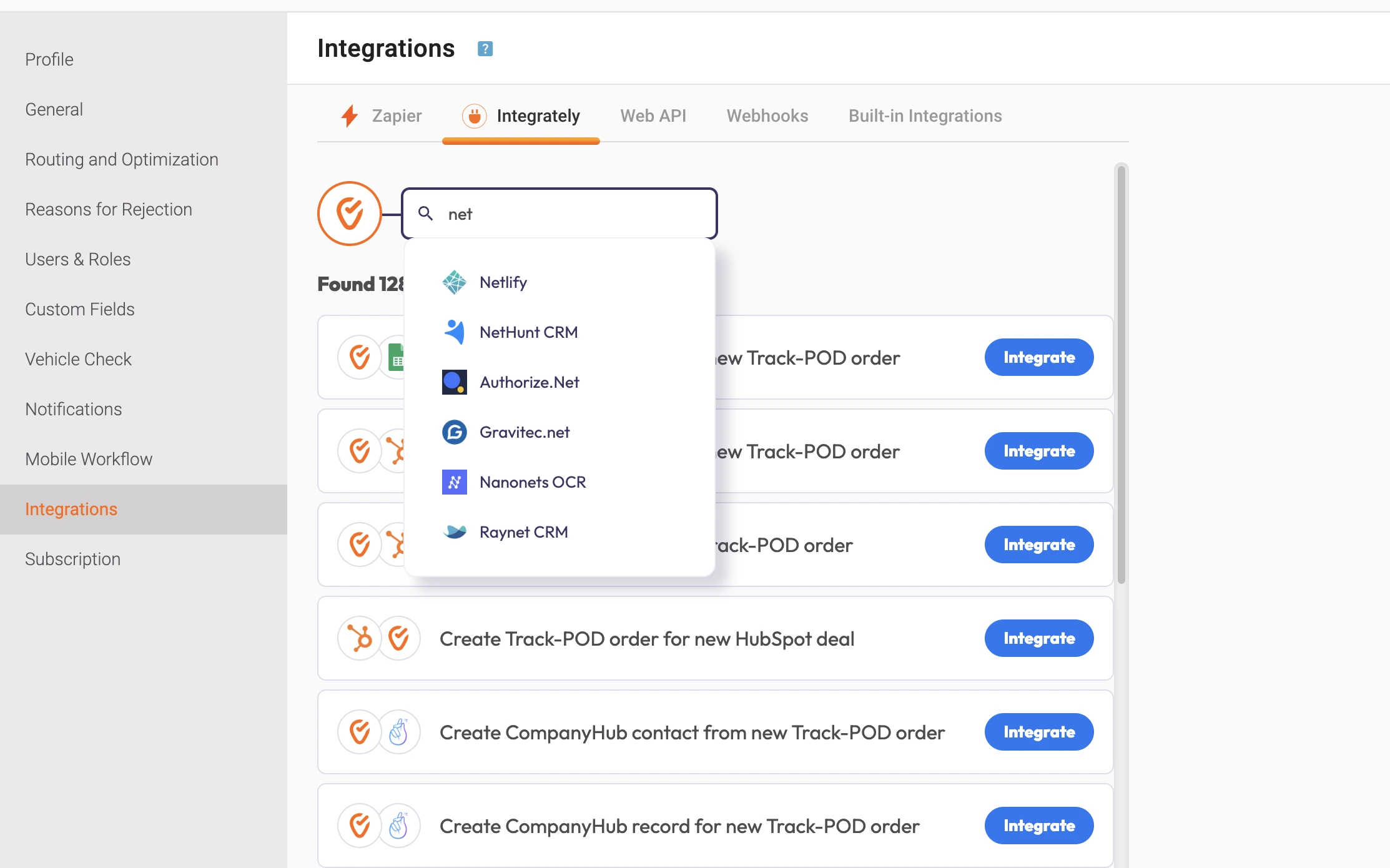
Track-POD also features an integration with Integrately — a no-code automation platform that allows you to connect Track-POD with thousands of other apps, fast. To get started, go to Settings > Integrations > Integrately. There, you’ll find a dedicated tab filled with ready-to-use automation templates.
Whether you're looking to sync orders from your CRM, trigger notifications, or automate back-office processes, Integrately gives you the flexibility to build custom workflows without writing a single line of code.
A typical use case? Imagine a delivery business that receives online orders through a CRM like Raynet or NetHunt. With Integrately, you can automatically create those orders in Track-POD, trigger route assignments, and even send updates via Gravitec.net or SMS—all in one automated flow. The result: faster dispatching, fewer errors, and a better customer experience from first click to final mile.
You can explore integrations with a myriad of tools for every possible need.
Use the search bar within the Integrately tab to quickly find the apps you already use and connect them to Track-POD in just a few clicks. With these plug-and-play automation options, your team can spend less time on manual tasks and more time delivering exceptional service.
Quick built-in integrations, Web API, and Webhooks give plenty of integration options, but Track-POD goes further with custom APIs for a more personalized approach.
Advanced Plus and Enterprise users can request custom API integrations to meet their specific needs.
All unique requests for custom API integrations can be handled with our technical team, who will provide the best solution within the scope of technical capabilities.
API work should be left in the hands of experts. As you’re working with Track-POD’s API, keep in mind the following points:
Track-POD’s enhanced API management empowers you to securely connect your systems with our powerful delivery management software. With advanced IP restrictions, enriched webhook triggers, and detailed endpoints—including the new Driver Note field—you have everything you need to streamline your integrations and drive operational efficiency.